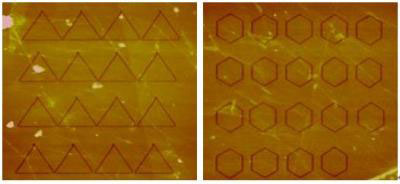I don't think I posted these; there's like seven more coming before the end of the year! They're kindof fun(the eso youtubes above). ESO has done great stuff down there. One should recall some telescope history. I'm sure I could use some review; but, I can recall some points.
Galileo turned the recent magnifying lens of a north europe person to make the first astronomical telescope. He made a few ever more powerful telescopes as well; so, one should not imagine that he just took what was given to him and pointed up at the night sky. The Galilean discoveries hopefully don't need to be recalled here.
Isaac Newton invented the reflector telescope as oppossed to the Galilean refractor. These two types would compete back and forth till the twentieth century Mount Wilson and Palomar reflectors. But, that's getting ahead of the story a little bit.
William Herschel in the 1700s made a do believe a reflector. He actually deduced infrared radiation, or some kind of energy(he didn't know what it was). I need to look that up. I don't think his reflectors were aluminized or had any kind of top reflective material.
In the 1800s, the parallax of stars was measured by telescope for the first time. Spectroscopy developed in the 1800s which allowed Helium to be discovered on the surface of the sun in 1868 before it was discovered on Earth first.
And of course, the reflector telescopes pretty much ended the refractor telescopes life in the 1900s. Or did it! Cloaking technology is one of the hottest fields of research today. It could help to make perfect optics; well, maybe they'll only be used on microscopes. When the Palomar telescope was built, they thought they'd reached the limit of size there. But a bunch of design innovations has allowed astronomers to bury the Palomar telescope; even today, the Palomar telescope is an antique! The ESO has been a major partipator in making the Palomar telescope obsolete. There was others, like the twin kecks, but because of Hawaiian religion, the Twin Kecks were not able to reach their potention; to make the Hubble space telescope obsolete.
What could be remarkable in all this is that the ESO four telescope optical interferometer(radio astronomy innovated combining the light/radiowavelength of several dishs into one; i remember astronomers saying optical interferometry was impossible; but, through theoretical/mathematical breakthroughs, we live in optical interferometric astronomical telescopes era!) can become obsolete faster than ESO thinks! A new company "Space Resources" who plan to mine the materials of asteroids plans on building a hugh space optical interferometer; we're talking about hundreds of space telescopes spread miles apart. Talk about making the Palomar telescope obsolete! The Russians as reported here already have made astronomy 'astronomical' with their spacebased radio interferometer with a diameter almost to the moon! They're making progress.
Gravity wave astronomy should be mentioned in the light of space based astronomical observatories. Astronomers have built and improved ground/earth gravity meters; but, even if they detect one, plans for a spacebased gravity meter will almost certainly dwarf anything possible here on Earth!
If the astronomical possibilities of the near future isn't enough, nanotechnology just keeps on progressing! Today, i saw reported automated precise stm patterning of graphene(one atom thick pieces of graphite; hence, they are already nanotechnology and on the atomic scale). I've also seen a week or so ago that graphene piezos have been successfully made; they were used to make kinetic energy devices; just wear these devices and your movement alone generates electricity. So, piezo graphene works. I'd expect Nano-Stm's based on these graphene piezos sooner than later. With those and this ability to automate the manufacture of precisely cut(by stms) graphene, graphene nanotechnology should take off in a big way.
The above picture are just some( probably) pictures of graphene(single atom thick materials) cut to precise automatic specifications by an Stms. Build a nano-Stms(the Stm that did this was not a nano-Stm), make chips of millions of Nano-Stm's cutting graphene nanoparts, are we can have nano-manufacturing happening sooner than later!
At the current pace of nanotechnology, Space Resources could have more competition than they may have thought!(not to mention spacex and everybody else). In fact, all today's most advanced technologies can be made obsolete in a few years time of whenever nano-Stm's get made. Just this past week there was also reported scalable photon quantum computers(they make quantum computers out everything, ions, quantum dots, superconductivity; they all have their advantages and disadvantages; in fact, some were trying to combine them all together to keep the good and negate the bad with some progress). Quantum computers could make nanomanufacturing look like animal powered mills.
Needless to say, there was also recent dna-nanotechnology reported; within the day of the article being reported, they took it down! The article is still up in their personal websites; so, i don't think it was because a flaw was found; it was because somebody decided that pathway to effective nanomanufacturing looks promising!(I'll admit, i'm biased!) But, I'm not lying about an interesting dna-nanomanufacturing article being posted yesterday or the day before and it being taken down!


No comments:
Post a Comment